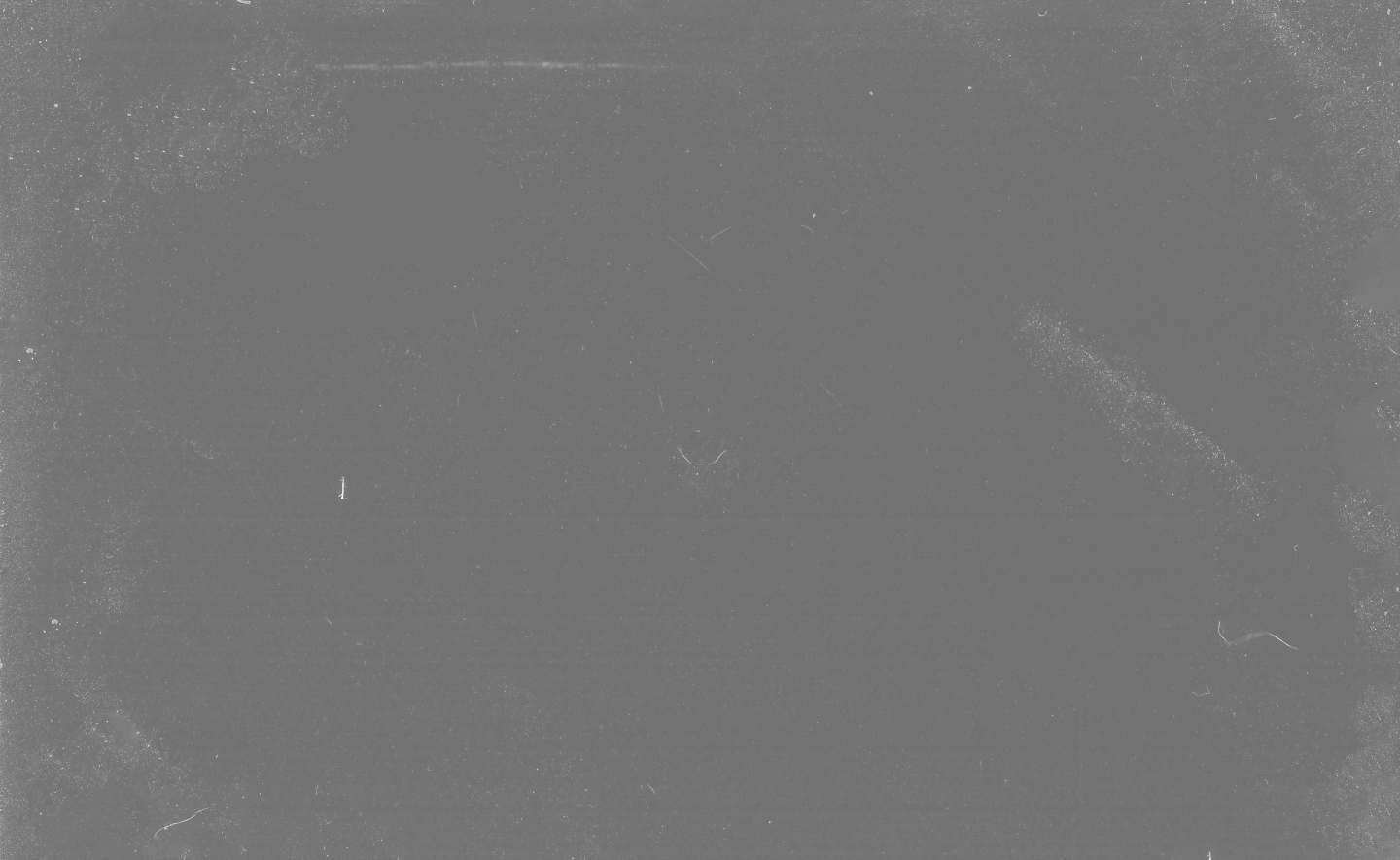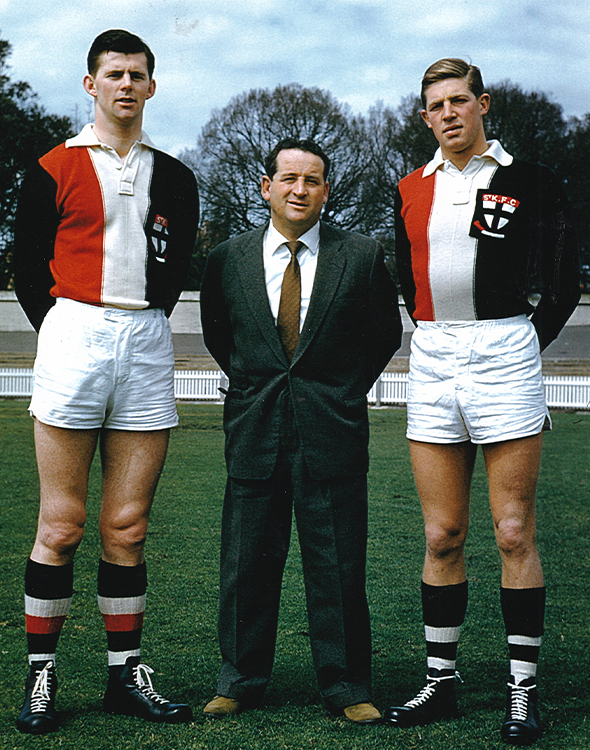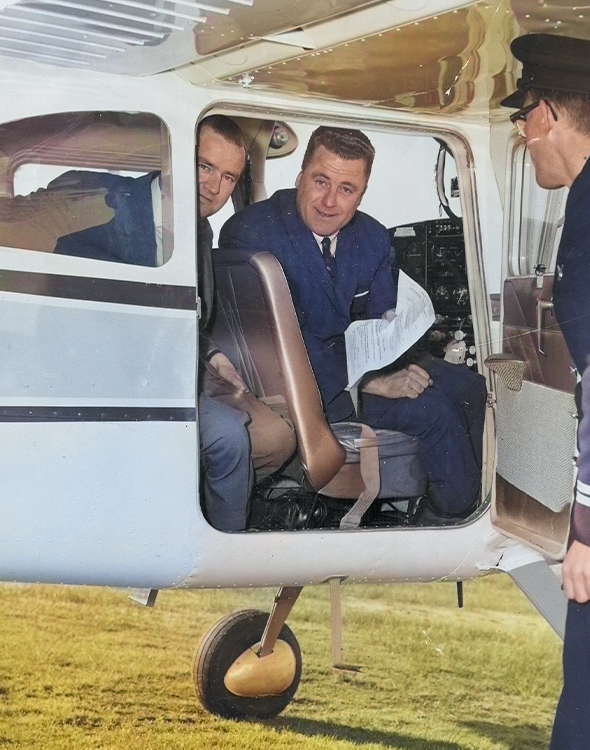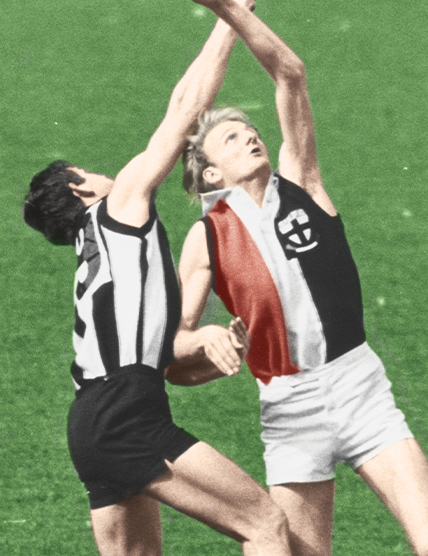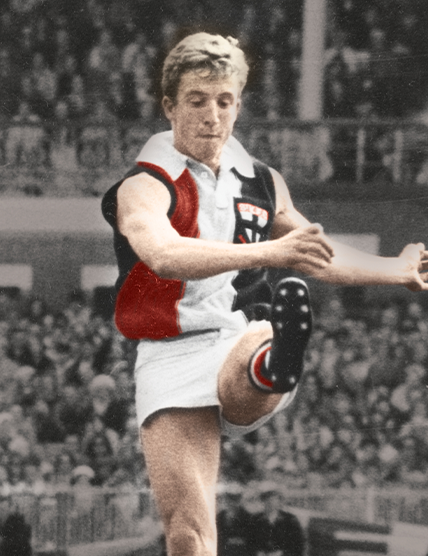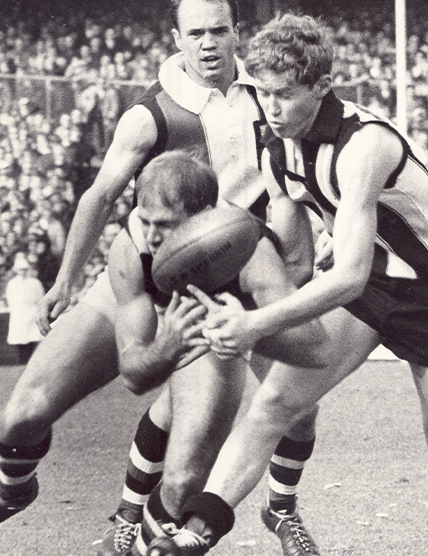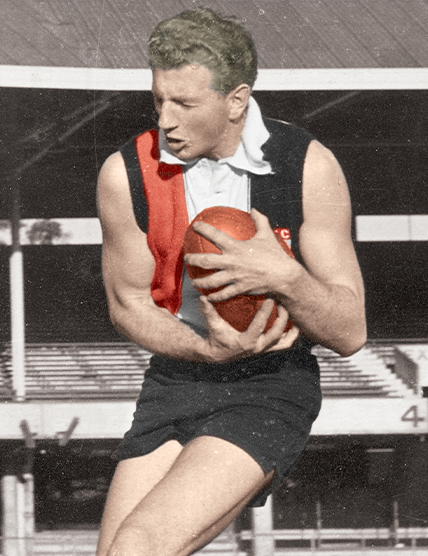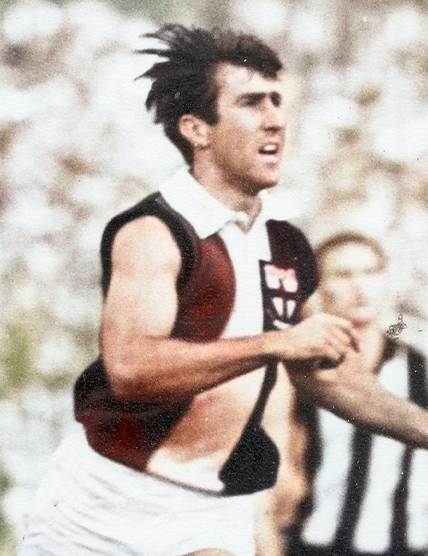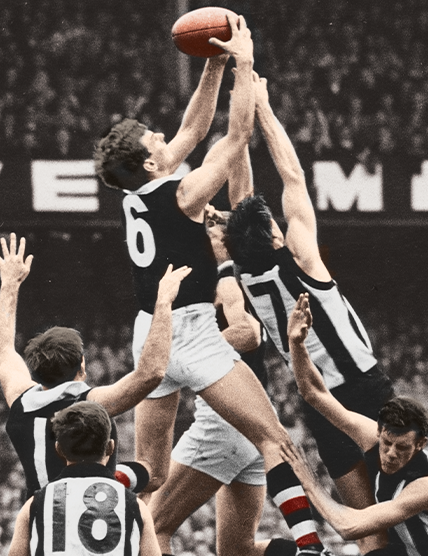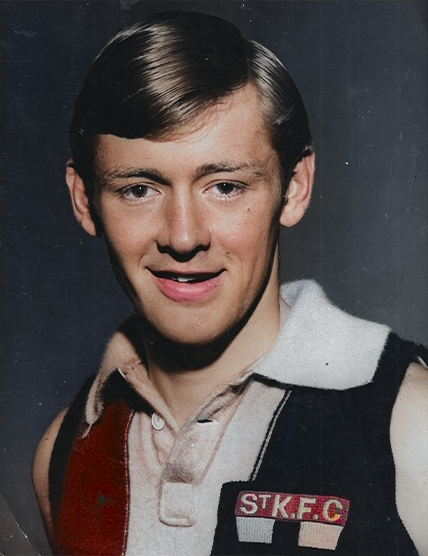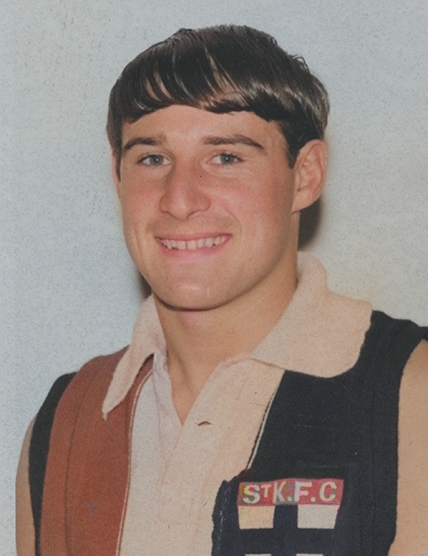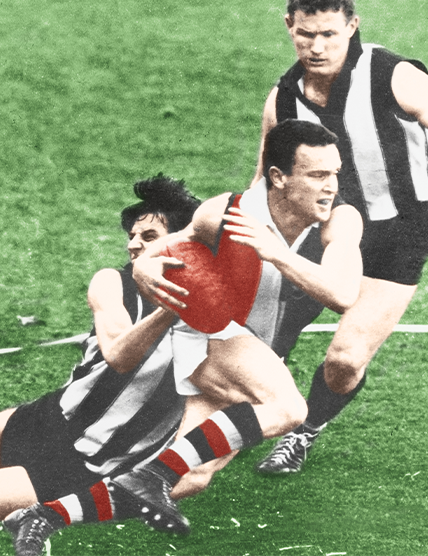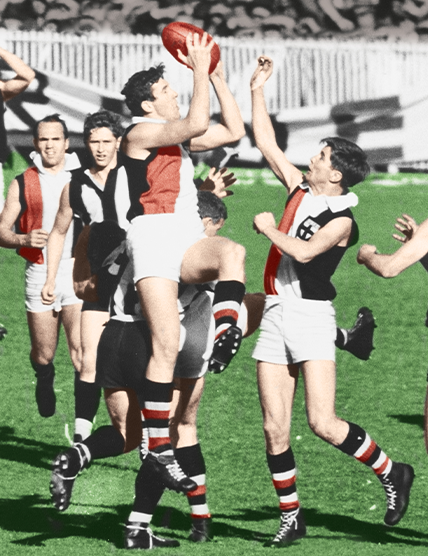The Premiership Twenty
A freakish and unique footballer who faced the twin challenges of carrying a knee injury, and facing opponent Ted Potter who had often contained him. Despite all that, he was crucial in the closing stages when swung onto the ball.
The 20th man who was never used off the bench. When the others ran a victory lap he didn’t join in because he felt he hadn’t contributed. While the affable Billing claims he's "famous for doing bugger all", his teammates still attest he is a deserving member of the Premiership Twenty.
A seasoned and tough player from Tasmania whose chances had been limited by injuries in his first couple of years. Given the vital role of containing the dangerous Tuddenham and carried it out to perfection.
Immortalised by his match deciding point in the closing minutes, Breen is a true Saints great. Apart from the famous point, he also played a good overall Grand Final in what was just his second season.
The beanstalk forward may have looked too skinny, but was a big-game player and never more so than in the biggest game of all. A brilliant mark also possessing fine ground skills and sharp creativity, he deservedly won the club’s award for best afield.
Although only 17 and in his 10th game, he played with confidence and assurance. As part of his role, he was told to draw Collingwood’s Montgomery, a man who targeted Baldock, out of the play; a tactic contrary to Davis’s attacking game.
The Hall of Famer had been bitterly disappointed with his game at half-back on Des Tuddenham in the semi, which saw the latter kick seven majors. Griffiths redeemed himself in the ruck roving role in the Grand Final, helping steer the Saints to victory.
A back pocket who would always bore in hard for the ball to limit resting rovers. In his early years at St Kilda, Head had been plagued by injuries and never seem likely to last.
A broken jaw had kept Howell out late in the season before returning for the finals. Despite losing a considerable amount of weight, he did his bit in the play-off.
A long-kicking winger in his second year at the club. A typical running goal from a distance was crucial in the final term, with Moran one of just five Saints' goalkickers for the day.
The oldest player in the team in what proved to be his last game. Morrow had to take on extra workload because of the late-season suspension of Ditterich, but as ever he rose to the challenge.
The resolute full-back who overcame the mental scars of a difficult 1965 series to have a vital hand in the 1966 Grand Final. Murray was steady in the pressurised finish greatest game of all when he took the game-saving mark.
Hardworking and honest ruckman whose responsibilities had increased in the absence of Ditterich. Mynott was typically put in a wholehearted effort on Grand Final day.
Kicking five of his team’s 10 goals was indicative of the big full-forward’s vital importance to the victory. In just his second year, he had great strength and deceptive speed off the mark.
Incredibly debuted in the 1966 semi-final and impressed with strong marking and three goals. Made a late run in the Grand Final, but took one very strong grab.
Read had been troubled by injury late in the season, but returned for the Preliminary Final and did well. Extremely tough winger who tackled hard.
One of the best afield in this game with his strong marking. Displayed excellent defensive work on resting Magpie talls Gabelich and Thompson.
Absolutely fearless rover whose Preliminary Final edge over his childhood heroes Essendon’s Clarke and Birt had paved the way to the Grand Final. Never conceded an inch in the Grand Final.
Superb centreman without a flaw in his game who came into the finals having just won his second Brownlow. Was just behind Ian Cooper as best afield.
Despite conjecture over whether he would play on the Jewish holiday Yom Kippur, Synman was never in doubt. A steadfast and consistent centre half back who held the record for the most consecutive Saints appearances (123).






